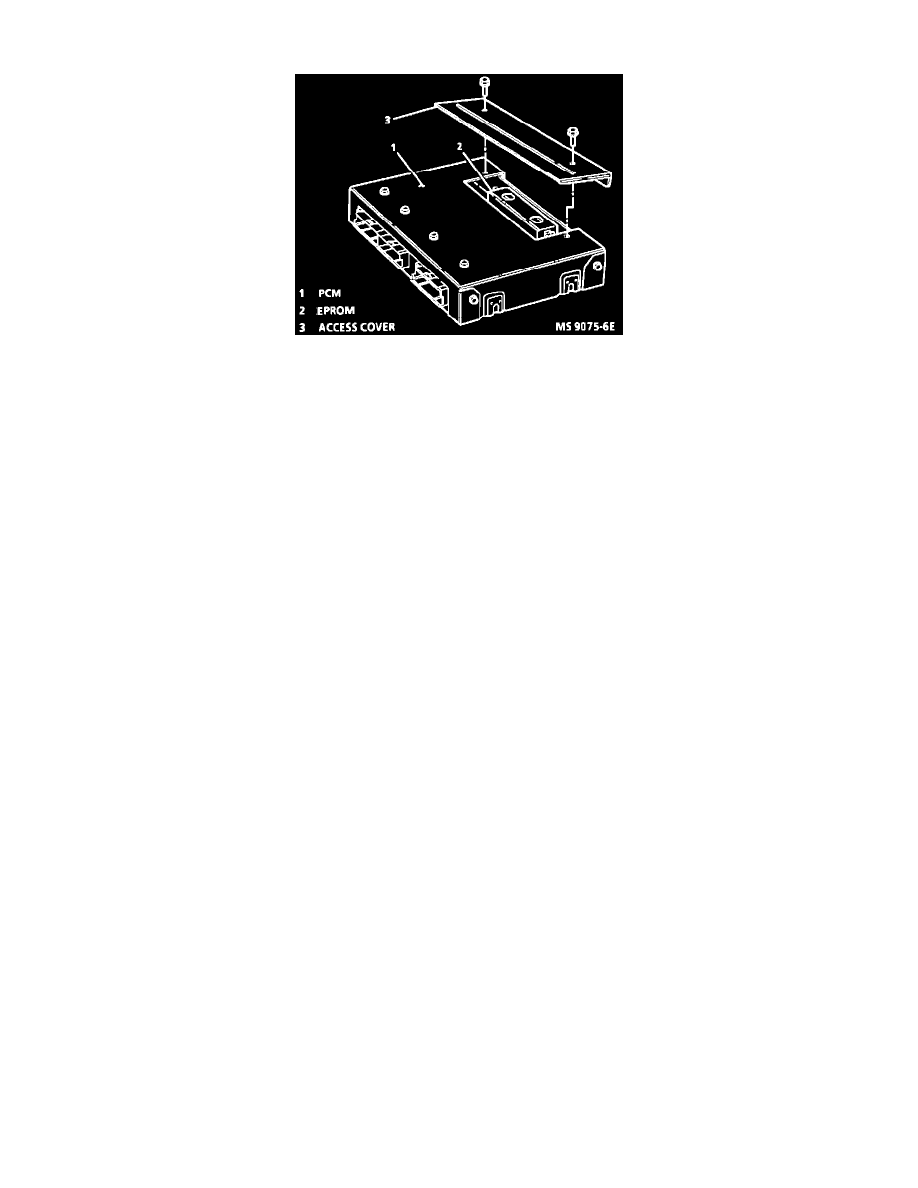K 2500 Truck 4WD V6-262 4.3L VIN Z TBI (1995)

Engine Control Module: Description and Operation
Powertrain Control Module (PCM)
PURPOSE
The Powertrain Control Module (PCM) is the control center of the fuel injection system. It constantly looks at the information from various
sensors (inputs) and controls the systems (outputs) that affect vehicle performance. The control module also performs the diagnostics of the
system. It can recognize operational problems, alert the driver through the Malfunction Indicator Lamp (MIL) "Service Engine Soon" light on the
instrument panel and store a Diagnostic Trouble Code(s) (DTC) in the control module memory. The DTC identifies the problem areas to aid the
technician in performing repairs.
OPERATION
The PCM is an electronic computer designed to process the various input information, and send the necessary electrical response to control fuel
delivery, spark control, and other emission control systems. The control module can control these devices through the use of Quad Driver Modules
(QDM). When the control module is commanding a device or a component "ON," the voltage potential of the output is "LOW" or near zero volts.
When the control module is commanding a device or component "OFF," the voltage potential of the circuit will be "HIGH," or near 12 volts. The
primary function of the QDM is to supply the ground for the component being controlled.
The input information has an interrelation between sensor output. If one of the input devices failed, such as the oxygen sensor, this could affect
more than one of the systems controlled by the computer.
The PCM has two parts for service:
-
Controller which is the control module without the PROM (MEM-CAL).
-
PROM (Programmable Read Only Memory) which is a separate memory calibrator unit
LEARNING ABILITY
The PCM has a "learning" ability which allows it to make corrections for minor variations in the fuel system to improve driveability. If the battery
is disconnected, to clear diagnostic trouble codes or for other repairs. The "learning" process resets and begins again. A change may be noted in
the vehicle's performance. To "teach" the vehicle, ensure the engine is at operating temperature. The vehicle should be driven at part throttle, with
moderate acceleration and idle conditions until normal performance returns.
NOTE: The PCM must be maintained at a temperature below 85°C (185°F) at all times. This is most essential if the vehicle is put through a
baking process. The control module will become inoperative if it's temperature exceeds 85°C (185°F). It is recommended that temporary insulation
be placed around the control module during the time the vehicle is in a paint oven or other high temperature processes.
